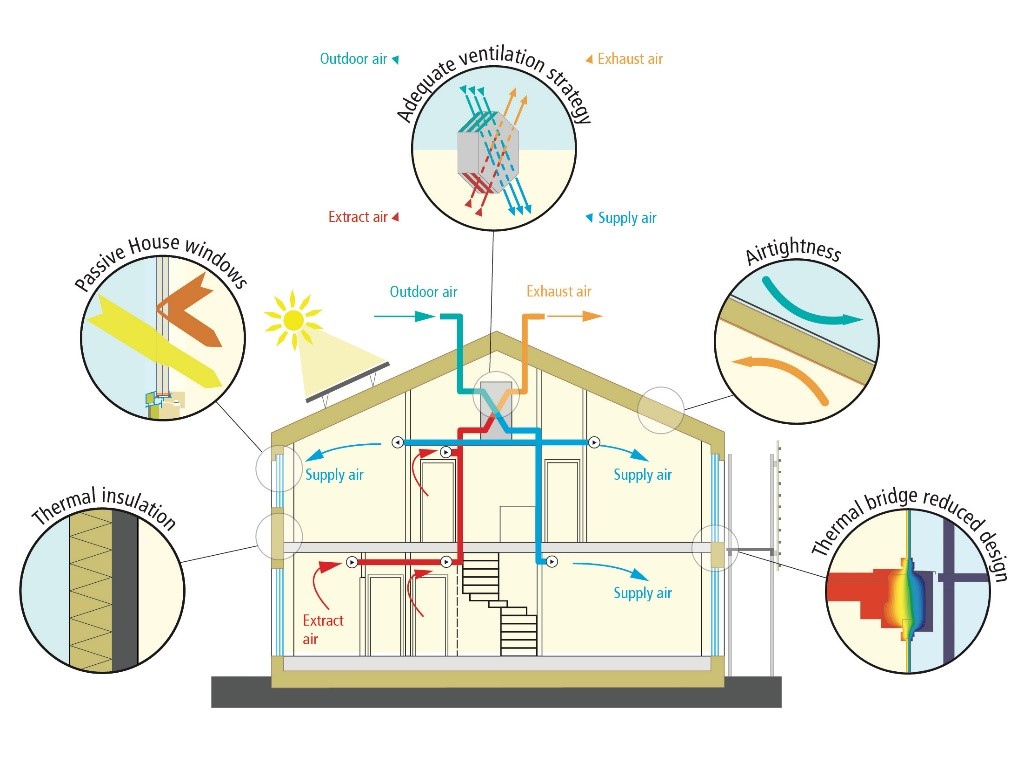The term passive house refers to the highest quality energy-saving construction, with very low heat demand for heating, without the use of radiators. The very concept of “passive” should be understood as opposing the active heating system based on the combustion of non-renewable fuels. The idea of a passive houses is to provide its users with climatic comfort both in summer and winter, i.e. during the period when heat is provided by passive heat sources and heat recovered from ventilation.
The term passive construction refers to the highest quality energy-saving construction, with very low heat demand for heating, without the use of radiators. The very concept of “passive” should be understood as opposing the active heating system based on the combustion of non-renewable fuels. The concept of a passive building was born as a response to the need to combine building energy efficiency, optimal thermal comfort, high indoor air quality and saving natural resources. As a result, five basic principles were created, which have been present since the design stage of passive buildings.
 Figure 1 – Five principles of passive houses (source: https://passiv.de/en/02_informations/02_passive-house-requirements/02_passive-house-requirements.htm)
Figure 1 – Five principles of passive houses (source: https://passiv.de/en/02_informations/02_passive-house-requirements/02_passive-house-requirements.htm)
Thermal insulation
All opaque building components of the exterior envelope of the house must be very well-insulated. For most cool-termperate climates, this means a heat transfer coefficient (U-value) of 0.15 W/(m²K) at the most, i.e. a maximum of 0.15 watts per degree of temperature difference and per square metre of exterior surface are lost.
Passive House windows
The window frames must be well insulated and fitted with low-e glazings filled with argon or krypton to prevent heat transfer. For most cool-termperate climates, this means a U-value of 0.80 W/(m²K) or less, with g-values around 50% (g-value= total solar transmittance, proportion of the solar energy available for the room).
Ventilation heat recovery
Efficient heat recovery ventilation is key, allowing for a good indoor air quality and saving energy. In Passive House, at least 75% of the heat from the exhaust air is transferred to the fresh air again by means of a heat exchanger.
Airtightness of the building
Uncontrolled leakage through gaps must be smaller than 0.6 of the total house volume per hour during a pressure test at 50 Pascal (both pressurised and depressurised).
Absence of thermal bridges
All edges, corners, connections and penetrations must be planned and executed with great care, so that thermal bridges can be avoided. Thermal bridges which cannot be avoided must be minimised as far as possible.
Author: Mazovia Energy Agency (Poland)